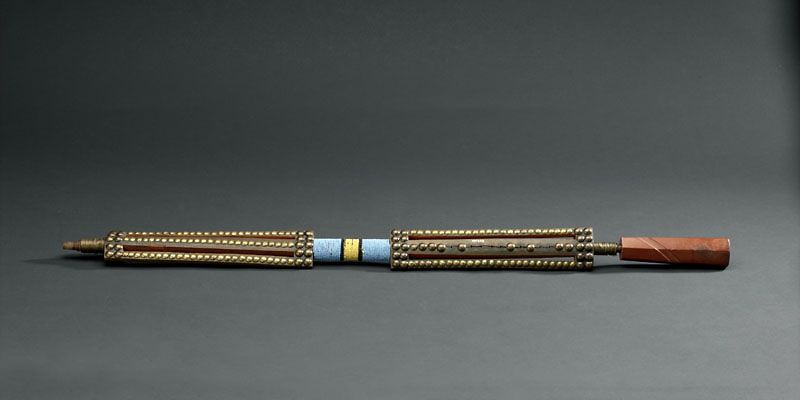Pipe Dreams
Siyu,
There are many styles of pipes for
ceremony. The first Blackfoot pipes were straight.
The straight pipe is the oldest
form of the tobacco pipe bowl known to Blackfoot traditions. Its
relative antiquity is attested by the facts that the straight pipe is
the only form referred to in tribal mythology, that it could have been
made with stone tools more easily than other known Blackfoot pipe bowl
forms, and that it has survived only in the ceremonial contexts of
sacred bundles. Probably the straight pipe bowl was smoked most commonly
while fitted to a fairly short willow or rosewood stem, which was split
longitudinally, the pith removed, and the two pieces glued together and
tightly bound with sinew.
The two known examples of Blackfoot
straight pipes differ markedly from each other in form. One has a rather
bulbous bowl with a constricted neck at the stem. The other has slightly
curved sides with a collar at the stem end. Both forms were found among
other tribes, the former among the Shoshone as early as 1805 (as
demonstrated by Lewis and Clark data), and the latter among the Crow
Indians in the 19th century (as illustrated by the specimens from
pipe-holder's bundles). Data are insufficient to indicate that the
Blackfoot favored either form of straight pipe, or to make possible the
positive identification of straight pipes found archeologically as of
Blackfoot origin.
The Modified Micmac pipe bowl
appears to have been made by Blackfoot pipe makers only within the
period that metal tools have been available to them.
Homentocweasa Oho
Wado, Desert Wolf

O
Hon-ga , I have a pipe that I have made to be my body:
If you
also make it to be your body,
You
shall have a body that is free from all cause of death.
Behold
the joint of the neck, they said,
That I
have made to be the joint of my own neck.
Behold
the mouth of the pipe,
That I
have made to be my mouth.
Behold
the right side of the pipe,
That I
have made to be the right side of my body.
Behold
the spine of the pipe,
That I
have made to be my own spine.
Behold
the left side of the pipe,
That I
have made to be the left side of my own body.
Behold
the hollow of the pipe,
That I
have made to be the hollow of my own body.
Behold
the thong that holds together the pipe and stem;
That I
have made to be my own windpipe.
... use
the pipe as an offering in your supplications,
Your
prayers shall be readily granted.


